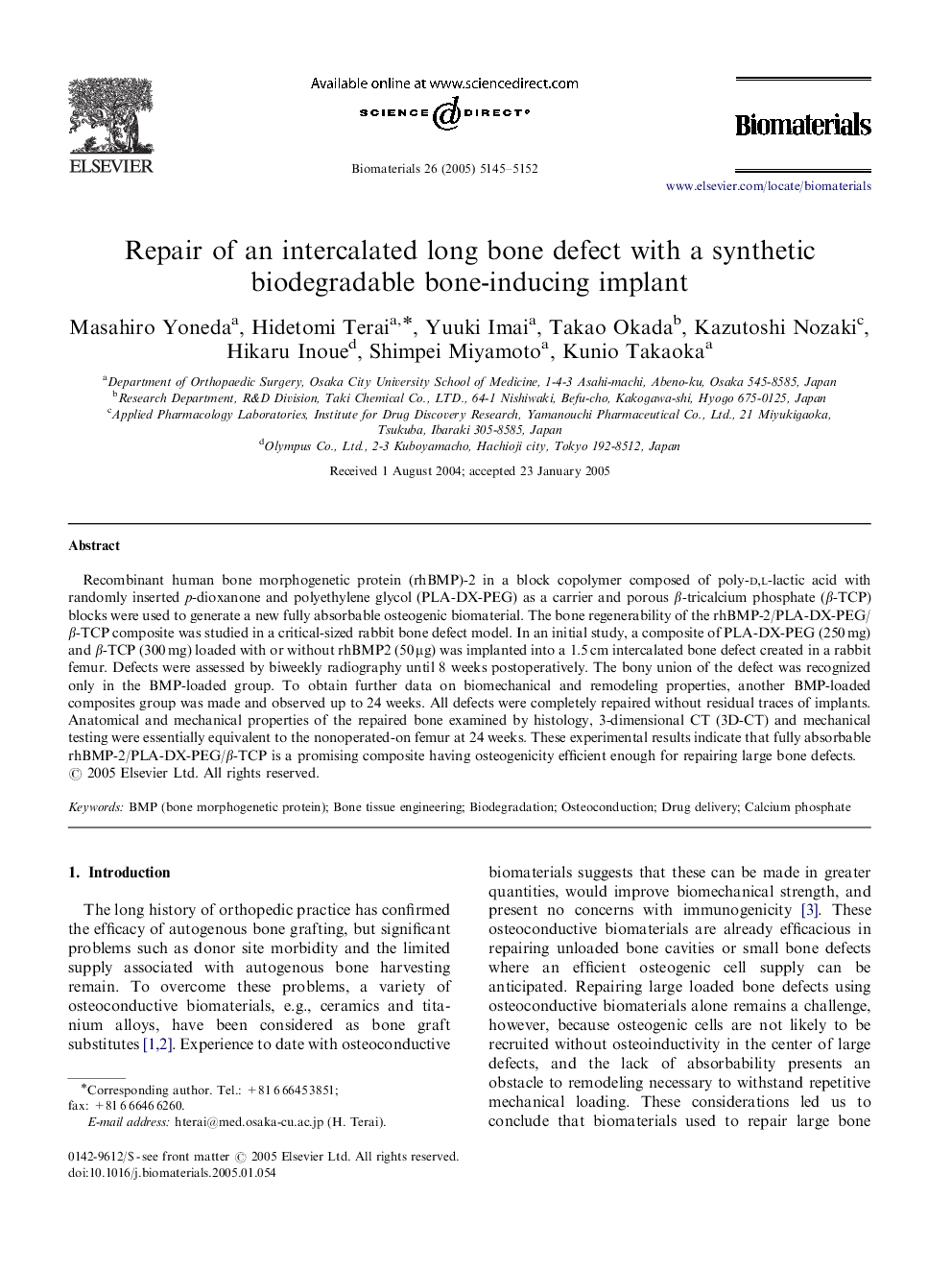| Article ID | Journal | Published Year | Pages | File Type |
|---|---|---|---|---|
| 12312 | Biomaterials | 2005 | 8 Pages |
Recombinant human bone morphogenetic protein (rhBMP)-2 in a block copolymer composed of poly-d,l-lactic acid with randomly inserted p-dioxanone and polyethylene glycol (PLA-DX-PEG) as a carrier and porous β-tricalcium phosphate (β-TCP) blocks were used to generate a new fully absorbable osteogenic biomaterial. The bone regenerability of the rhBMP-2/PLA-DX-PEG/β-TCP composite was studied in a critical-sized rabbit bone defect model. In an initial study, a composite of PLA-DX-PEG (250 mg) and β-TCP (300 mg) loaded with or without rhBMP2 (50 μg) was implanted into a 1.5 cm intercalated bone defect created in a rabbit femur. Defects were assessed by biweekly radiography until 8 weeks postoperatively. The bony union of the defect was recognized only in the BMP-loaded group. To obtain further data on biomechanical and remodeling properties, another BMP-loaded composites group was made and observed up to 24 weeks. All defects were completely repaired without residual traces of implants. Anatomical and mechanical properties of the repaired bone examined by histology, 3-dimensional CT (3D-CT) and mechanical testing were essentially equivalent to the nonoperated-on femur at 24 weeks. These experimental results indicate that fully absorbable rhBMP-2/PLA-DX-PEG/β-TCP is a promising composite having osteogenicity efficient enough for repairing large bone defects.
